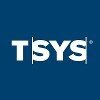Fraud Analyst
70+ Fraud Analyst Interview Questions and Answers

Asked in Tech Mahindra

Q. What is the difference between customer service and customer support?
Customer service focuses on providing assistance and guidance to customers, while customer support focuses on resolving specific issues or problems.
Customer service involves helping customers with general inquiries, providing information, and offering solutions to their problems.
Customer support is more specialized and involves addressing specific issues or problems that customers may encounter.
Customer service is proactive and focuses on building relationships with customers...read more

Asked in American Express

Q. How would you explain fraud to a 12-year-old?
Fraud is when someone tricks or deceives others to steal their money or personal information.
Fraud is a type of dishonest behavior where someone tries to take advantage of others for their own gain.
It involves tricking or deceiving people to steal their money, personal information, or belongings.
Fraud can happen in different ways, such as online scams, identity theft, or fake products.
For example, if someone pretends to be a bank representative and asks for your credit card d...read more
Fraud Analyst Interview Questions and Answers for Freshers

Asked in American Express

Q. What is the importance of soft skills in customer-facing roles?
Soft skills are crucial in customer dealing business as they help in building rapport, resolving conflicts, and ensuring customer satisfaction.
Soft skills like communication, empathy, and active listening help in understanding customer needs and concerns.
They also aid in conflict resolution and problem-solving, which are essential in dealing with dissatisfied customers.
Soft skills like patience and positivity help in maintaining a calm and professional demeanor, even in stres...read more

Asked in Startek

Q. How many types of join are there? Explain left outer join
There are four types of join: inner, outer, left, and right. Left outer join returns all records from the left table and matching records from the right table.
Inner join returns only matching records from both tables
Outer join returns all records from both tables
Left join returns all records from the left table and matching records from the right table
Right join returns all records from the right table and matching records from the left table
Example: SELECT * FROM table1 LEFT...read more

Asked in Wipro

Q. What is fraud, and what are different ways to prevent it?
Fraud is a deliberate deception for personal gain. It can be stopped by implementing fraud prevention measures.
Fraud can occur in various forms such as identity theft, credit card fraud, insurance fraud, etc.
To prevent fraud, companies can implement measures such as background checks, fraud detection software, and employee training.
Consumers can protect themselves by being cautious of suspicious emails, phone calls, and websites, and regularly monitoring their financial accou...read more

Asked in Goldman Sachs

Q. What is a chargeback, and can you explain the chargeback cycle?
Chargeback is a transaction reversal made by a bank or credit card issuer, usually due to fraud or disputed charges.
Chargeback occurs when a customer disputes a charge and the bank or credit card issuer reverses the transaction.
The merchant is notified of the chargeback and can either accept it or dispute it.
If the chargeback is accepted, the merchant loses the sale and may be charged a fee.
If the chargeback is disputed, the bank or credit card issuer investigates and makes a...read more
Fraud Analyst Jobs




Asked in Wipro

Q. What is the difference between credit and debit cards?
Credit cards allow users to borrow money from the card issuer up to a certain limit, while debit cards are linked to the user's bank account and funds are directly withdrawn.
Credit cards allow users to borrow money up to a certain limit set by the card issuer.
Debit cards are linked to the user's bank account and funds are directly withdrawn from the account when making a purchase.
Credit cards typically have higher interest rates and fees compared to debit cards.
Credit cards c...read more

Asked in Goldman Sachs

Q. What is elder abuse and how do you detect it?
Elder abuse is mistreatment of older adults, which can be physical, emotional, financial, or sexual.
Detecting elder abuse involves looking for signs of physical injuries, such as bruises, cuts, or burns
Changes in behavior, such as withdrawal or depression, can also be a sign of elder abuse
Unexplained financial transactions or sudden changes in a senior's financial situation can indicate financial abuse
Sexual abuse can be detected by observing signs of trauma or changes in beh...read more
Share interview questions and help millions of jobseekers 🌟


Asked in Wipro

Q. If you were a fraudster, how would you scam merchants, for example, Amazon?
Exploring potential fraud tactics against merchants like Amazon highlights vulnerabilities in e-commerce systems.
Create fake accounts to exploit promotional offers, such as signing up for free trials multiple times.
Use stolen credit card information to purchase high-demand items and resell them.
Engage in return fraud by purchasing items, using them, and then returning them for a full refund.
Manipulate reviews by creating fake accounts to leave positive feedback on fraudulent ...read more

Asked in Wipro

Q. What is cvv ? Same cvv number can work with another card?
CVV is a security code on credit/debit cards. It is unique to each card and cannot be used with another card.
CVV stands for Card Verification Value and is a 3 or 4 digit security code on credit/debit cards.
It is used to verify that the person making the purchase actually possesses the card.
CVV is unique to each card and cannot be used with another card.
If someone has both the card number and CVV, they can potentially make fraudulent transactions.

Asked in iEnergizer

Q. What parameters should be considered when analyzing fraudulent transactions?
Parameters to assume about fraud txns
Transaction amount
Transaction location
Transaction frequency
Transaction type
User behavior
Device used for transaction
IP address
Time of transaction

Asked in Wipro

Q. What is fraud, and how can it be explained?
Fraud is a deliberate deception to secure unfair or unlawful gain, often involving false information or misrepresentation.
Fraud involves intentional deception or misrepresentation
It is committed to gain an unfair advantage or financial benefit
Common types of fraud include identity theft, credit card fraud, and insurance fraud

Asked in Shopee

Q. What do you know about fraud in e-commerce platforms?
Fraud in e-commerce platforms involves various types of scams and fraudulent activities aimed at deceiving customers or stealing sensitive information.
Fraudulent transactions using stolen credit card information
Phishing scams targeting customers to obtain personal information
Account takeover fraud where hackers gain access to user accounts
Fake product listings and sellers deceiving customers
Identity theft through fake profiles or accounts

Asked in TSYS|Total System Services

Q. Can you walk me through the background process of credit cards?
The background process of credit cards involves application, approval, issuance, usage, billing, and payment.
Application: Customer applies for a credit card with a financial institution.
Approval: The financial institution reviews the customer's credit history and other factors to approve or deny the application.
Issuance: If approved, the credit card is issued to the customer.
Usage: The customer uses the credit card to make purchases or transactions.
Billing: The financial inst...read more

Asked in HCLTech

Q. What is a card network, and how does it operate?
A card network is a company that processes credit and debit card transactions between merchants and card issuers.
Card networks facilitate the authorization, clearing, and settlement of transactions.
They set the rules and standards for card transactions, such as security protocols and interchange fees.
Examples of card networks include Visa, Mastercard, American Express, and Discover.

Asked in HCLTech

Q. What is a chargeback, and what is the process involved in handling chargebacks?
A chargeback is a reversal of a transaction made by a customer, typically due to fraud or dissatisfaction.
A chargeback occurs when a customer disputes a transaction with their bank or credit card issuer.
The process involves the merchant receiving a notification of the chargeback and providing evidence to dispute it.
If the chargeback is upheld, the funds are taken back from the merchant and returned to the customer.
Common reasons for chargebacks include unauthorized transactio...read more

Asked in iEnergizer

Q. What is the difference between a debit card and a credit card?
Debit cards are linked to a checking account and funds are withdrawn directly, while credit cards allow you to borrow money up to a certain limit.
Debit cards are linked to a checking account, while credit cards are a form of borrowing.
Debit card transactions are deducted directly from your checking account balance, while credit card transactions are added to your credit card balance.
Debit cards do not charge interest as you are using your own money, while credit cards charge ...read more

Asked in HCLTech

Q. What is the difference between a dispute and a chargeback?
Dispute is initiated by the cardholder, while chargeback is initiated by the card issuer.
Dispute is when a cardholder questions a charge on their statement, while chargeback is when the card issuer reverses a transaction due to fraud or other reasons.
Disputes are resolved between the cardholder and merchant, while chargebacks involve the card issuer and merchant.
Disputes can be resolved without involving the card issuer, but chargebacks always involve the card issuer.
Examples...read more

Asked in R1 RCM

Q. What do you understand by customer care executive?
A customer care executive is a professional who provides assistance and support to customers, ensuring their satisfaction and resolving their issues.
Customer care executives are responsible for handling customer inquiries, complaints, and feedback.
They provide information about products or services, answer questions, and address concerns.
They may assist customers in placing orders, tracking shipments, or processing returns.
Customer care executives strive to provide excellent ...read more

Asked in Barclays PLC

Q. Difference between US and UK customers, what is fraud and scam
US and UK customers have different fraud perceptions. Fraud is intentional deception for financial gain, while scam is a fraudulent scheme.
US customers may be more cautious due to higher exposure to fraud, while UK customers may be more trusting.
Fraud involves intentional deception for financial gain, such as identity theft or credit card fraud.
Scams are fraudulent schemes designed to trick individuals into giving away money or personal information, like phishing scams or lot...read more
Asked in Ramp Infotech

Q. Share your fraud analytics background and how it fits this role.
Experienced fraud analyst with a strong background in data analysis, risk assessment, and fraud detection methodologies.
Over 5 years of experience in fraud analytics, focusing on identifying and mitigating fraudulent activities in financial transactions.
Utilized machine learning algorithms to develop predictive models that improved fraud detection rates by 30%.
Conducted thorough investigations into suspicious transactions, leading to the recovery of over $1 million in fraudul...read more

Asked in TSYS|Total System Services

Q. Why is customer service important, especially with victims of fraud?
Customer service is important with fraud victims to provide support, guidance, and reassurance during a stressful time.
Building trust and rapport with victims can help them feel supported and more likely to cooperate with investigations.
Providing clear and timely communication can help victims understand the situation and next steps.
Offering resources and assistance can help victims navigate the process of reporting fraud and recovering their losses.
Showing empathy and unders...read more

Asked in iEnergizer

Q. What is the difference between a credit card and a debit card?
Credit cards allow users to borrow money from the card issuer, while debit cards deduct funds directly from the user's bank account.
Credit cards allow users to make purchases on credit, with the card issuer lending the money for the transaction.
Debit cards deduct funds directly from the user's bank account at the time of purchase.
Credit cards typically have a credit limit, while debit cards are limited to the available funds in the linked bank account.
Credit cards may charge ...read more

Asked in TTEC India

Q. What are the fundamental concepts related to fraud?
Fraud involves deception for personal gain, impacting individuals and organizations through various schemes and tactics.
Types of Fraud: Includes financial fraud, identity theft, insurance fraud, and credit card fraud. Example: Phishing scams.
Fraud Triangle: Consists of three elements - pressure, opportunity, and rationalization. Example: An employee steals due to financial stress.
Red Flags: Indicators of potential fraud, such as unusual transactions or changes in behavior. Ex...read more

Asked in Qatar Airways

Q. What do you understand by Fraud Monitoring?
Fraud monitoring involves the continuous surveillance of transactions and activities to detect and prevent fraudulent behavior.
Continuous surveillance of transactions and activities
Detection and prevention of fraudulent behavior
Utilizes technology and data analysis to identify suspicious patterns
May involve setting up alerts for unusual activities
Requires collaboration with other departments like risk management and compliance

Asked in iEnergizer

Q. When do we need to raise a chargeback?
Chargebacks are raised when a customer disputes a transaction and requests a refund from their bank.
Chargebacks are typically raised when a customer does not recognize a charge on their statement or believes the transaction was fraudulent.
Chargebacks can also be raised if the customer did not receive the product or service they paid for.
As a fraud analyst, it is important to investigate chargebacks to determine if they are legitimate or if they are part of a larger fraud sche...read more

Asked in Qatar Airways

Q. What are the sub type of fraud? What is 3DS? Why is Authorisation necessary? Chargeback cycle?
Sub types of fraud include identity theft, credit card fraud, and phishing. 3DS is a security protocol for online transactions. Authorization is necessary to verify the legitimacy of a transaction. Chargeback cycle involves disputing a transaction and reversing the charge.
Sub types of fraud: identity theft, credit card fraud, phishing
3DS: security protocol for online transactions
Authorization: necessary to verify legitimacy of transaction
Chargeback cycle: disputing a transact...read more

Asked in Priority Technology Holdings

Q. What are DDL commands?
DDL commands are used to create, modify, and delete database objects.
DDL stands for Data Definition Language.
Examples of DDL commands include CREATE, ALTER, and DROP.
CREATE is used to create a new database object, such as a table or index.
ALTER is used to modify an existing database object, such as adding a column to a table.
DROP is used to delete a database object, such as a table or index.

Asked in Wipro

Q. Explain what fraud is in your own words.
Fraud is the intentional deception for personal gain or to cause harm.
Fraud involves intentional deception or misrepresentation
It is committed for personal gain or to cause harm
Examples include identity theft, credit card fraud, and insurance fraud

Asked in Qatar Airways

Q. What applications are used for chargebacks?
Some applications used for chargeback include Verifi, Ethoca, and Chargebacks911.
Verifi
Ethoca
Chargebacks911
Interview Questions of Similar Designations
Interview Experiences of Popular Companies








Reviews
Interviews
Salaries
Users

















